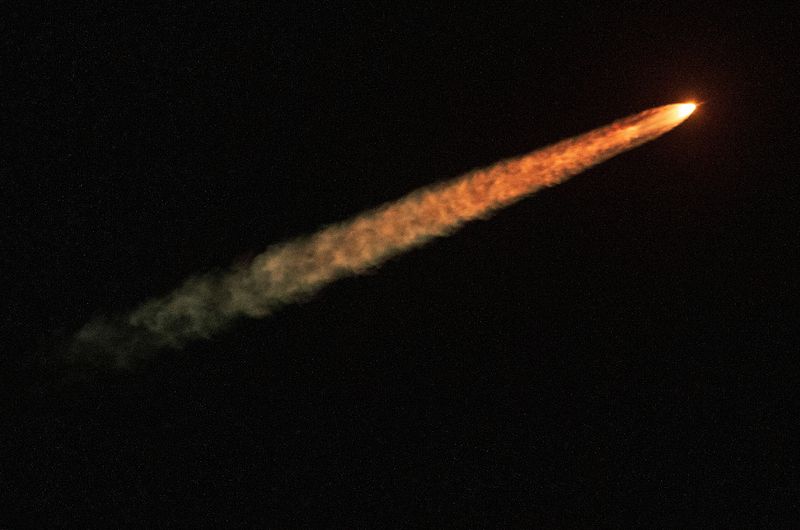NASA capsule to return after flying around the Moon
2022.12.11 01:32
[ad_1]

NASA capsule to return after flying around the moon
Budrigannews.com – On Sunday, the first mission of the Artemis lunar program, the uncrewed NASA Orion capsule hurtled through space on the final return leg of its journey around the moon and back. This took place 50 years to the day after Apollo’s final moon landing.
At 9:39 a.m. PST (1739 GMT), the gumdrop-shaped Orion capsule, which was carrying a simulated crew of three sensors-wired mannequins, was scheduled to parachute into the Pacific near Guadalupe Island, off the Baja California peninsula in Mexico.
Orion was nearing the end of its 25-day mission, having reached its farthest point in space, nearly 270,000 miles (434,500 kilometers) from Earth, less than a week after doing a lunar flyby and passing about 79 miles (127 kilometers) above the moon.
The capsule was expected to re-enter the atmosphere of Earth at 24,500 miles per hour (39,400 kilometers per hour), which is more than 30 times faster than sound, and then take a fiery 20-minute plunge into the ocean after removing the service module that contained its primary rocket system.
On November 16, Orion launched from the Kennedy Space Center in Cape Canaveral, Florida, atop NASA’s massive next-generation Space Launch System (SLS), which is currently the most powerful rocket in the world and the largest that NASA has constructed since the Saturn V of the Apollo era.
Artemis, Apollo’s successor program, was launched with the first SLS-Orion mission. Its goal was to bring astronauts back to the lunar surface in ten years and build a sustainable base there as a stepping stone for future human exploration of Mars.
Artemis I’s return to Earth coincided with the 50th anniversary of Gene Cernan and Harrison Schmitt’s 1972 moonwalk on Apollo 17 by chance. During the six Apollo missions that began in 1969, they were the final 12 NASA astronauts to walk on the moon.
The single most crucial phase of Orion’s journey is re-entry, which tests whether its newly designed heat shield can withstand temperatures outside the capsule that are expected to reach nearly 5,000 degrees Fahrenheit (2,760 degrees Celsius).
More Canada want to speed up mining
At a briefing last week, NASA’s Artemis I mission manager Mike Sarafin stated, “It is our priority-one objective.” With a heat shield of this size, there is no arc-jet or aerothermal facility on Earth that can replicate hypersonic re-entry.”
It will likewise test the high level direction and engine frameworks used to control the case from the moon to its legitimate reemergence point and through plummet, keeping up with the space apparatus at the perfect point to abstain from catching fire.
Eric Coffman, senior manager of Orion propulsion at Lockheed Martin Corp. (NYSE:), describes it as “essentially like throwing a football 300 yards and hitting a penny.” according to Reuters, which built Orion under contract with NASA.
He stated that an internal navigation and control system instructs 12 onboard thrusters, which are recessed along the base of the capsule, to fire propellant bursts as necessary to maintain the capsule’s correct orientation and course.
When Orion returns from the moon, it will be subjected to more heat, speed, and forces than other spacecraft doing more routine descents from low-Earth orbit or the International Space Station (ISS).
Orion is programmed to use a novel “skip entry” descent, which involves the capsule briefly entering the upper atmosphere, flying back out, and re-entering. This is a braking maneuver that also provides more control over steering the vehicle closer to its intended splashdown target. This is yet another novel twist.
Officials from NASA have emphasized the experimental nature of the Artemis I mission, which was the first Boeing (NYSE:) launch. the first SLS built together with Orion, which flew a brief two-orbit test in 2014 using a smaller Delta IV rocket
NASA has praised the performance of both SLS and Orion thus far, boasting that they have exceeded the expectations of the U.S. space agency, despite the capsule’s unanticipated communication blackouts and electrical issue.
A crewed Artemis II flight around the moon and back could happen as early as 2024 if Artemis I is deemed successful. Within a few more years, Artemis III could make the first lunar landing with astronauts, including a woman.
Artemis is more science-based and broad-based than Apollo, which was the result of the U.S.-Soviet space race during the Cold War. It has commercial partners like Elon Musk’s SpaceX and the space agencies of Europe, Canada, and Japan.
It also marks a significant turning point for NASA, which now focuses on human spaceflight beyond low-Earth orbit after spending decades focusing on the ISS and space shuttles.








